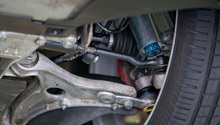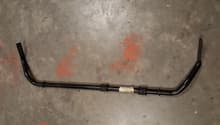Porsche 928: Suspension Modifications
With the 928 getting older, many of the suspension components are often showing their age. Various suspension modifications can be completed to either restore or greatly improve the handling characteristics and ride of the 928.
This article applies to the Porsche 928 (1978-1995).
The Porsche 928 is often considered a GT car that combines the elements of power, handling, and comfort all in one. Often with GT cars, the handling and ride can be a bit more supple than owners would like. Fortunately, there is a wide variety of suspension modifications that can be done to the 928 to make it a bit more hard-edged and improve handling characteristics. This article will evaluate popular suspension modifications for the 928. Whether you are a weekend warrior looking to extract that last bit of cornering performance out of your car, or an enthusiast who simply wants to sharpen their 928's handling, there are upgrades available to fit everyone's tastes.
Suspension Modifications
Upgrades to the 928's suspension system are often best accomplished in stages. Upgrading one component at a time will allow owners to gain an understanding of how each new component affects the ride and handling of their car. This method will allow owners to gauge if the new upgrades are adequate to their needs without spending excess funds on unnecessary parts. This article will walk through some of the available 928 suspension upgrades, beginning with the components that will offer subtle changes and working up to more hard-edged modifications.
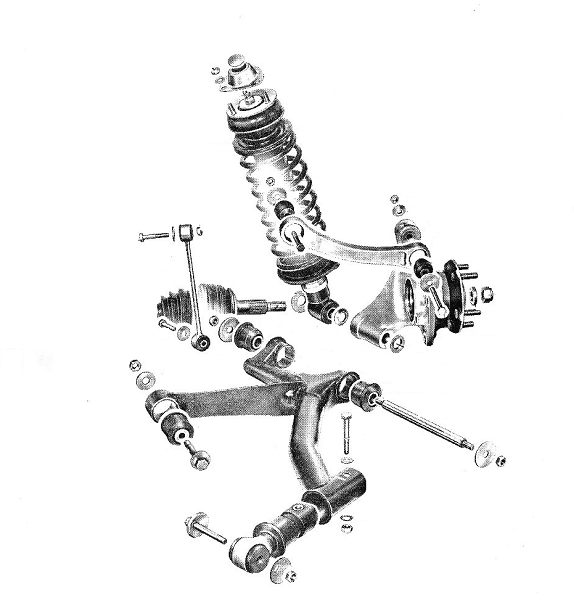
Suspension Bushings
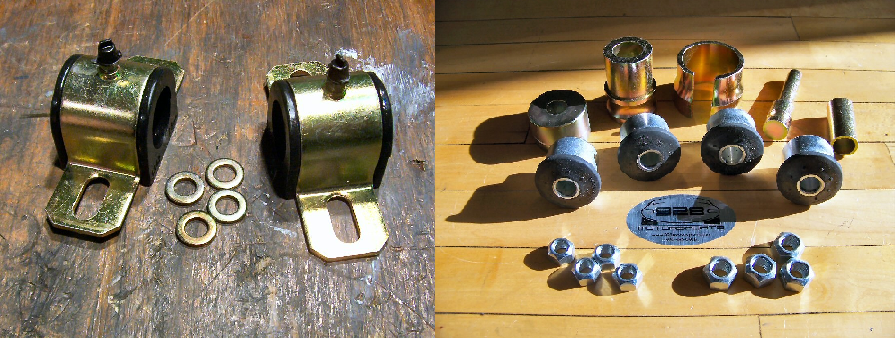
DIY Cost – $100-650
Professional Cost – $300+
Skill Level – Moderate; Requires removal of the specific suspension component from the vehicle to install new bushings.
The first area any 928 owner should look at when considering suspension upgrades are in the rubber suspension bushings. The 928 utilizes rubber bushings in the front and rear control arms, sway bars, rear "banana" links, and Weissach links. Naturally, the rubber bushings have some give in them to isolate noise and vibrations, but, over time, have likely worn or deteriorated, causing excessive slop in the suspension components. Replacing the rubber bushings with improved modern components (often polyurethane) will sharpen turn-in and improve mid-corner handling. For most owners, bushing replacement provides such a significant improvement in handling, they do not feel the need for further suspension upgrades. However, if you are considering additional suspension modifications, do not skimp on bushing replacement as you will not get your money's worth out of additional components if your bushings are bad.
Drop Links
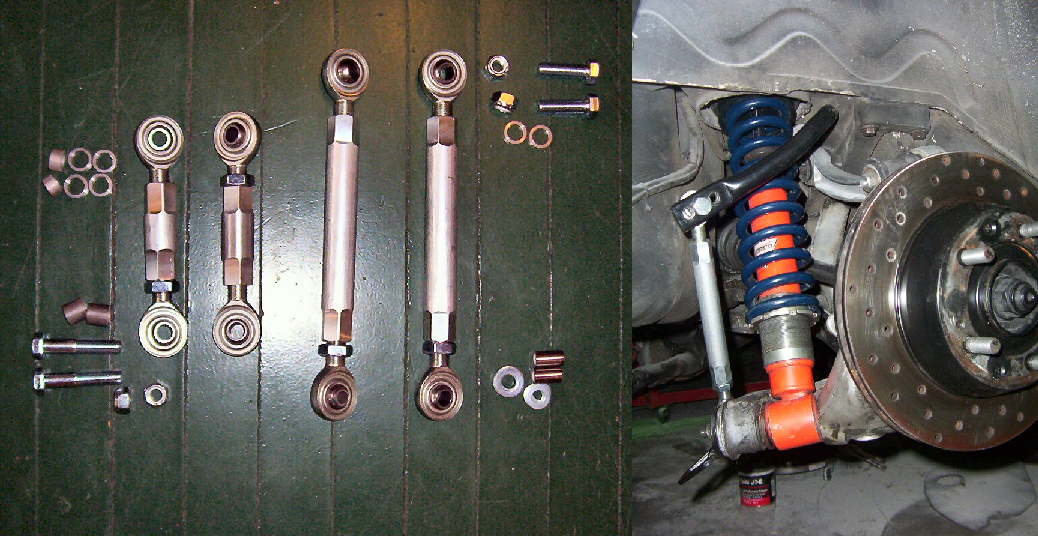
DIY Cost – $150-300
Professional Cost – $250+
Skill Level – Easy; Can be installed without any suspension dis-assembly.
For owners looking to improve their handling a bit further, adjustable anti-roll bar drop links can reduce body roll. The stock drop links use rubber isolators that will squish and deform over 1/2" while cornering. As a result, the body will lean a significant amount before the rubber is compressed to a point where the anti-roll bars begin to react. Adjustable drop links replace the rubber isolators with heim joints that will instantly transfer loads to the anti-roll bars, thus reducing body roll. Additionally, owners will benefit from the adjustability of new drop links as they can dial in/out understeer and oversteer by adjusting the preload on the anti-roll bars. This a great modification that is significantly cheaper than upgrading to heavier anti-roll bars.
Anti-Roll Bars

DIY Cost – $400-600
Professional Cost – $600+
Skill Level – Easy to Moderate; Front can be quickly installed. Rear is a bit more in-depth with removal of suspension components.
Individuals seeking even further reduction in body roll without significantly impacting ride quality can switch to stiffer anti-roll bars (sway bars). Aftermarket anti-roll bars are larger in diameter than the stock roll bars, and allow less flex when cornering. In addition to being oversized, most anti-roll bars have multiple mounting holes for additional fine tuning. In general, new anti-roll bars will reduce the independence of the suspension and deliver flatter cornering with minimal body roll. Additionally, corner turn-in will be improved as well as steering response.
Unlike stiffer springs and dampers, the increased stiffness of aftermarket sway bars has minimal impact on ride quality. The only time their presence is felt is when one wheel hits a bump, and the other doesn't, as the stiffer bar better transmits the force to the other side of the suspension.
Coilovers

DIY Cost – $1,000-5,000
Professional Cost – $1,800+
Skill Level – Moderate; Requires removal of the front and rear suspension components to gain access to the coilover (strut).
If using the strategy of modifying your suspension components in stages, installation of coilovers is typically one of the final stages of modification for the 928. Most owners report a significantly harsher ride with the installation of aftermarket coilovers. However, the trade-off is the ability to significantly alter ride height and adjust suspension dampening. There is a variety of kits available, ranging from street with occasional track use to fully-adjustable competition coilovers. Most coilover suppliers will happily work with owners to spec out a set of shocks and springs to meet their demands and intended uses. On the other hand, if your stock 928 struts are worn and tired, there are modern shocks and springs that will improve handling and ride quality without all the bells and whistles found on adjustable coilovers.
Chassis Bracing

DIY Cost – $150-500
Professional Cost – $250+
Skill Level – Easy; Can be quickly installed with basic tools.
For individuals tracking their 928 and looking to eliminate every last bit of chassis flex, chassis braces may provide the answer. Individuals who track their car may run a significant amount of negative camber to improve cornering, but lose out on braking and straight line stability from reduced tire contact patches. During cornering, the frame actually flexes and reduces the amount of camber; therefore, owners are continually looking to add more negative camber. The use of a frame brace can reduce chassis flex, and thus allow normal camber settings to be used as the camber will no longer change mid-corner. Similarly, an upgraded strut tower brace, one that joins the two front strut towers, will reduce strut tower flex that occurs from the continual tension and compressed forces being applied to the chassis.
Related Discussions
- Aftermarket Sway Bar - Rennlist.com
- A-Arm Bushing Replacement - Rennlist.com
- Coilover Options - Rennlist.com
- Coilover Comments Needed - Rennlist.com
- Adjustable Drop Links - Rennlist.com


